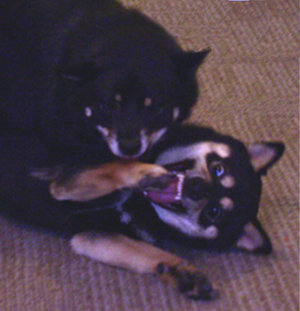
Zuki needed more than a fence to keep her safe at home, but a stake and tie out wouldn’t have provided enough space for her to run around. My father came up with the idea for this long cable run which solved the problem. Here are the instructions (with photos) for how we built it.








